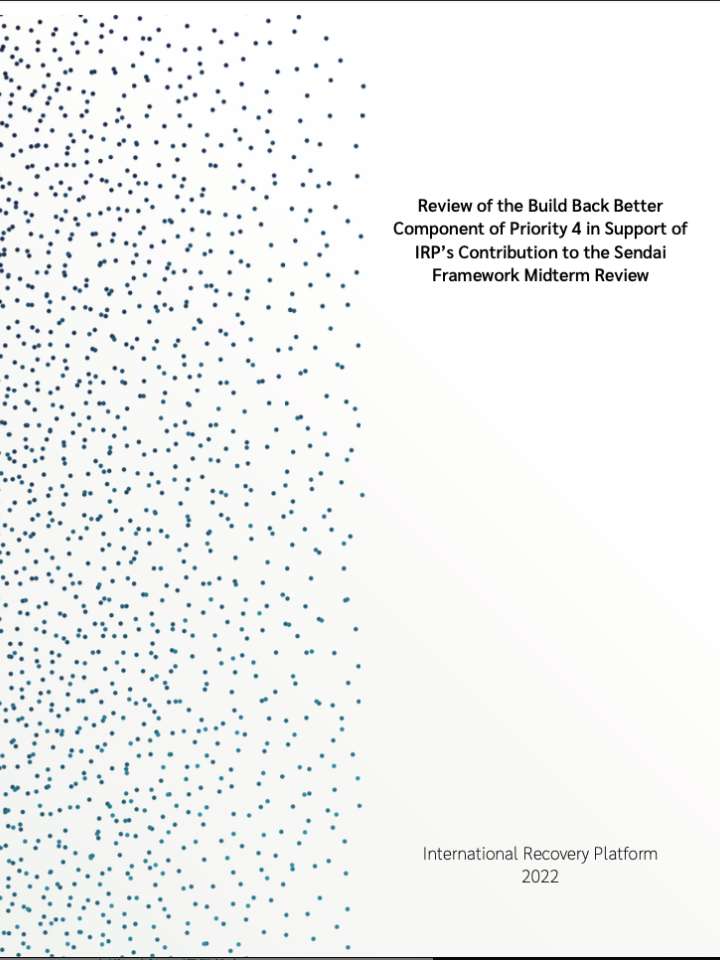Review of the Build Back Better Component of Priority 4 in Support of IRP’s Contribution to the Sendai Framework Midterm Review
This report involves systematic desk review and expert interviews for a better understanding of the patterns in disaster recovery research and practice in the period June 2015 to June 2022. In-depth reviews of scientific papers and gray literature were undertaken using the Scopus and PreventionWeb databases following the Preferred Reporting Items for Systematic Reviews and Meta-Analyses (PRISMA) guidelines. Interviews with the Steering Committee members of the IRP were conducted to obtain expert insights.
The discussion summarizes the advances and trends in recovery and building back better focusing on BBB, tools and guidance, and key recovery themes as well as identifies the challenges that remain and the priorities to accelerate actions. The widespread recognition of BBB and better understanding of the approach in practice are considered among the significant advances in the build back better component of Priority 4. Among the tools and guidance that facilitated implementation of resilient recovery include Post-Disaster Needs Assessments, recovery frameworks and recovery planning guidance, and infrastructure guidelines. The themes in focus include governance, financing, inclusion and gender, social protection, community recovery, private sector, and environment. Among the challenges identified are institutions and governance systems, recovery financing, technical capacity, large scale models of BBB, inclusion, climate change and risk landscape. To accelerate actions, priorities to be considered are revisiting recovery governance models; applying systems- based approaches; implementing transdisciplinary actions; partnerships; implementing green recovery; localization; utilizing science, technology and innovation; undertaking pre-disaster recovery planning, sharing of lessons learned and good practices, enhancing capacity building tools, and putting in place monitoring and evaluation, and recovery investments tracking mechanisms. Moving forward, it would be important to prioritize addressing the gaps that exist in policy, financing, and institutional arrangements to ensure a recovery that is holistic, efficient, sustainable and resilient.

